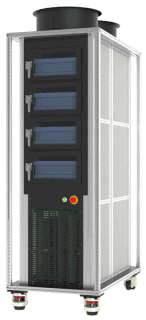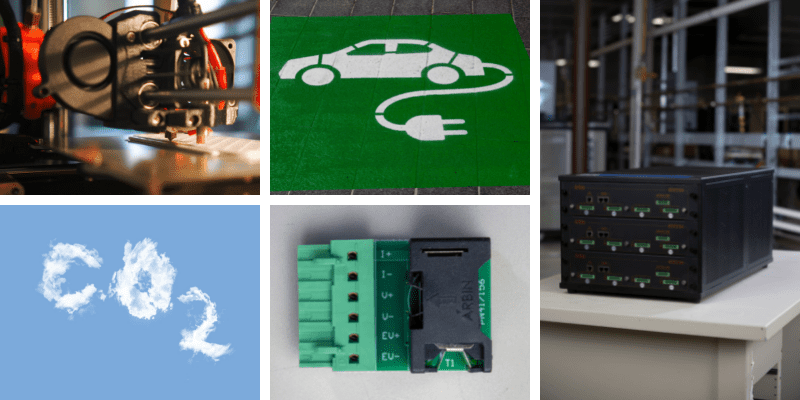测试电池组的电池管理系统(BMS)是电池验证过程中的一个关键因素。. Used to monitor the individual cells in a battery pack, the BMS can communicate essential information to an external interface, such as the battery test equipment. This BMS-to-tester communication has several important functions including verifying the BMS is functioning properly by comparing the BMS readings to the tester measurements. The Arbin CAN interface also allows the BMS to control the tester in real-time and apply dynamic “clamp” limits that can protect or further enhance the testing process. To take advantage of these features, however, the Battery Management System needs a communication protocol.
CAN bus is the most common protocol for communication between a cycler and a BMS. It provides a wide range of communication and control capabilities. Arbin’s Mits Pro employs the CAN Bus protocol, allowing CAN messages to be sent and received between the battery test equipment and the Battery Management System, and allows external control of the Arbin tester.
The Advantages of Arbin’s CAN Bus Capability
Arbin’s CAN Bus interface feature offers several important benefits for battery test operators. First, it provides you with a more flexible solution for CAN communication. Versatile enough to address a wide variety of testing applications and profiles, Arbin’s CAN Bus features can be used without third-party equipment, DLL packages, or licenses that are typically required. Through Mits Pro, Arbin’s CAN Bus functionality also allows you to define your own protocols, assign nicknames, and control tests according to your specific needs and testing standards.
Dynamic control of the Arbin cycler is another benefit of this CAN Bus feature. Unlike standard solutions, control of testing with Arbin’s CAN Bus feature is not restricted to static values for the length of the test. You can assign a CAN message to control values dynamically, with different values at various stages of a test. The CAN Bus solution also allows the BMS to fully control the Arbin testers’ charge and discharge using the CAN protocol.
The final key advantage of Arbin’s CAN Bus solution is that it facilitates communication and control between the Arbin battery tester and the Battery Management System in four distinct ways. You can customize the CAN configuration to fit virtually any requirements, allow the BMS to fully control the test equipment, monitor CAN information, and export CAN and I/V data to CSV or Excel formats for reports.
1.CAN定义。定制您的CAN配置
Arbin’s CAN interface allows users to easily import their dbc file with custom CAN protocols. Once imported into Arbin’s GUI the CAN dbc is fully customizable to edit, add nicknames to CAN IDs, units can be assigned to IDs, and each can be enabled or disabled for control and logging during the test. No additional 3rd 为了达到这种方便程度,需要有第三方软件、许可证或DLL包。一个独特的CAN配置文件可以分配给Arbin测试器的每个测试通道。
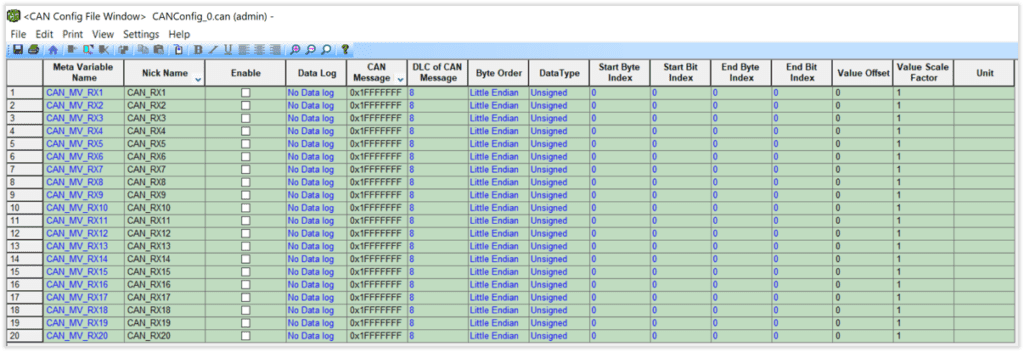
The ease of import and customization to work with the CAN IDs is the foundation of other powerful abilities of Arbin’s CAN Interface. Arbin支持足够的CAN消息ID,允许使用额外的协议集。因此,测试器可以同时与BMS以及其他外部资源进行通信。
2.CAN控制。完全控制Arbin电池测试仪
Arbin’s CAN Bus capability also offers the ability to fully control your battery test equipment. This includes several key features, such as read/write integration, dynamic upper and lower “clamp” limits, and external control of the tester.
Read/write integration with the Battery Management System through CAN Bus allows for full control of the cycler’s charge and discharge. The “Write CAN Message” option can be used to send a command or multiple commands to the BMS throughout a test procedure. Through CAN messages, the BMS can tell the test equipment to charge or discharge at a particular value of current, power, etc. Including dynamic control. This communication can also be used to tell the test equipment to discontinue or slow down the charge or discharge at a certain value.

Dynamic upper and lower “clamp” limits are another important CAN Bus feature enabled through CAN messages. You can set CAN meta-variables that assign dynamic power and current limits in real-time while a test is running, rather than a single static limit that is pre-defined in the test schedule.
这些动态限制有助于提高测试期间系统的安全性,并验证BMS对电池的保护。例如,BMS可以根据动态限制在模拟过程中限制功率,即使模拟配置文件要求更高的功率和/或电流水平。动态功率和电流限制对于驱动循环模拟和类似的测试应用特别重要,因此模拟可以不暂停地运行,但BMS可以限制模拟的峰值功率输出。
CAN communication also allows for external control of the Arbin battery tester. An external source such as LabView can send CAN messages to control the test equipment. You can also employ the “Write CAN Message” option to send a command to third-party software throughout a test, just as you can through the Battery Management System. This is especially powerful during BMS development.
CAN监控。监控CAN信息
Another important feature of CAN is the ability to actively monitor CAN information. The Monitor and Control interface of Arbin’s Mits Pro software lets you monitor CAN details in real-time so that you can see communication and changes as they happen. Additionally, the Monitor and Control interface provides tools to send CAN messages manually.
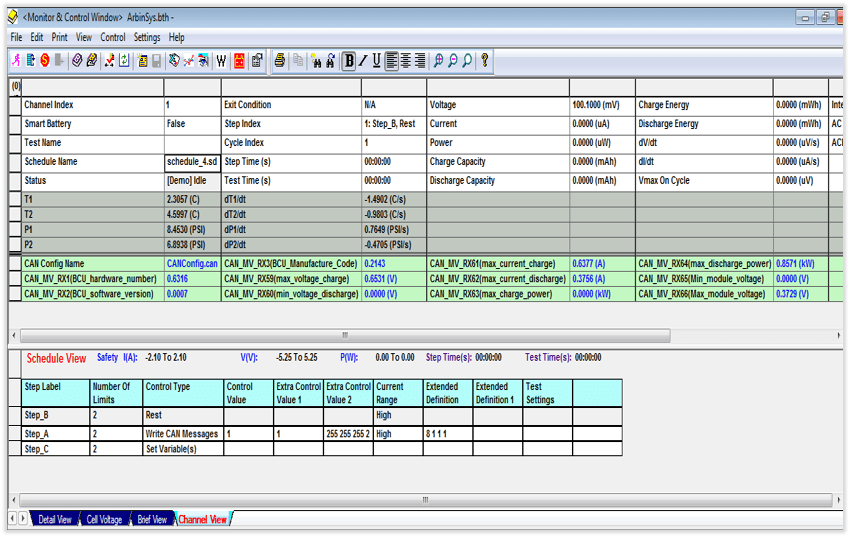
在监测实时信息的基础上,CAN的数据监测亮点包括生成报告来比较测试数据。有了这个功能,你可以方便地将你的电池测试设备收集的数据与电池管理系统的数据在一个结果文件中进行对照。把这些数据放在一个地方,可以更容易地比较和分析结果。
4.CAN查看数据。查看和导出CAN和I/V数据
Finally, Arbin’s CAN Bus features include export options that give you even more flexibility review, store, and analyze your testing data. You can easily export both CAN and I/V data in either CSV or Excel formats with this capability. The CSV and Excel formats allow you to import your data to third-party programs for more advanced processing.
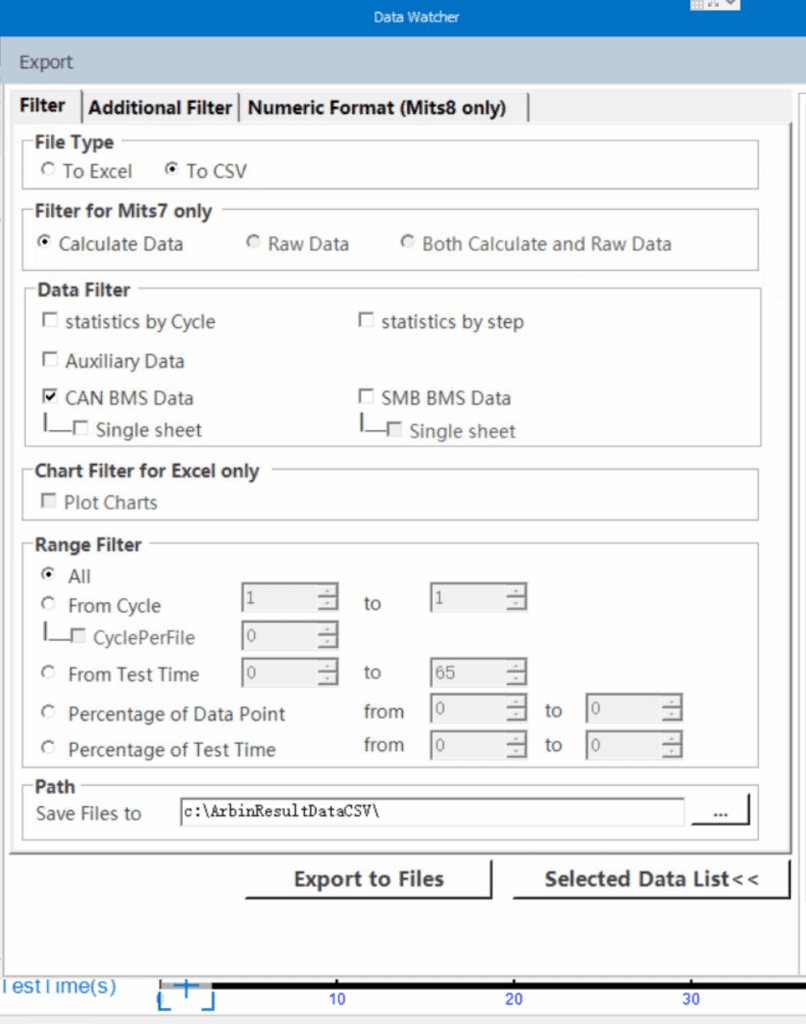
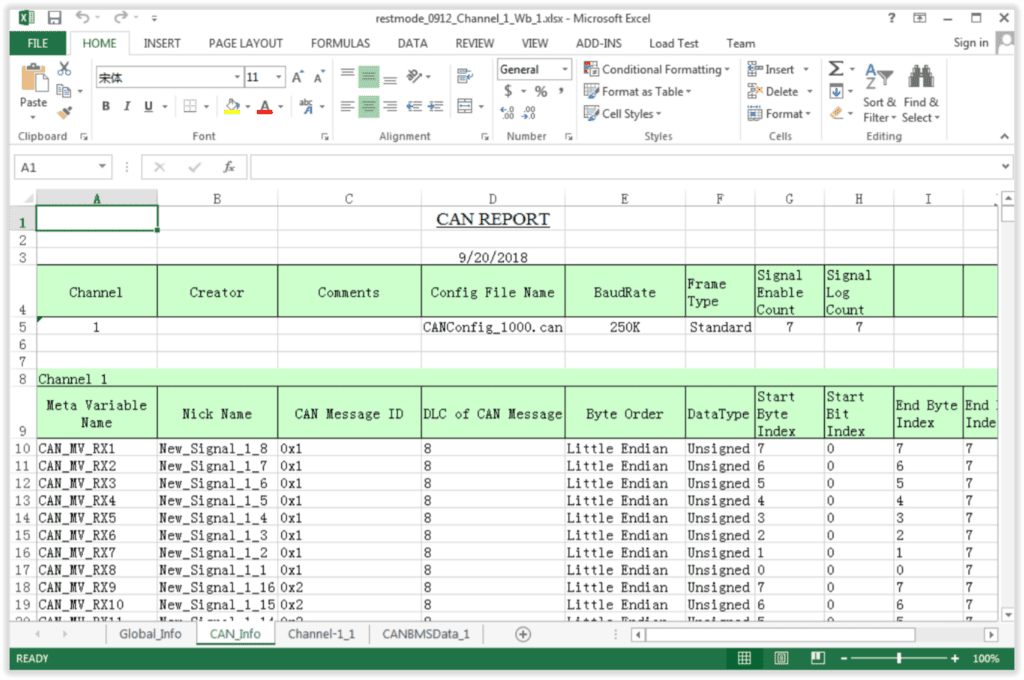

使用CAN总线通信进行功率钳制限制
One use case for Arbin’s CAN Bus features in simulation profiles is through power clamp limits. With traditional termination limits, surpassing the limit in an EV (Electric Vehicle) drive profile, for example, means that the test is stopped, halting your testing progress. In addition, the simulation profile will have to be changed manually, to address the battery operating parameters that caused the battery to exceed those safety limits.
Although standard safety limits are still implemented along with the CAN option, CAN Bus communication offers an additional layer of flexibility. CAN protocol can assign a “power clamp” limit that is controlled dynamically over the course of the test. In this case, the BMS or modeling program will send messages that update the power output limit throughout the test.
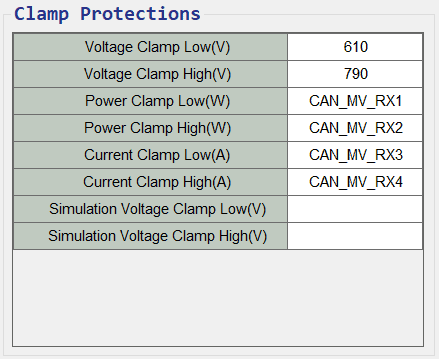
与传统的安全限制不同,功率钳限制限制了Arbin系统的功率输出,而不会停止测试。由于数值在测试过程中是动态的,这可以更好地反映现实生活中的条件和功率输出。使用CAN总线通信来设置功率钳位限制,不仅可以加快测试过程,而且还可以对功率输出限制进行更复杂的控制。
Arbin’s CAN Bus Capabilities and Your Customized Testing System
Arbin’s CAN Bus feature allows for communication between a BMS and an Arbin battery tester, something that is critical for many testing applications. Protecting the system and battery and actively controlling test equipment through the Battery Management System are just a few of the benefits from CAN communication.
这些CAN总线功能只是Arbin提供的众多功能之一,为您提供所需的工具,以满足您的特定电池测试要求。 今天就联系我们 to learn more about using CAN with your BMS and your Arbin battery testing equipment – and more features to customize your testing setup. From drive cycle profiles and more, we can help you create a battery testing system that is ideal for your application.


